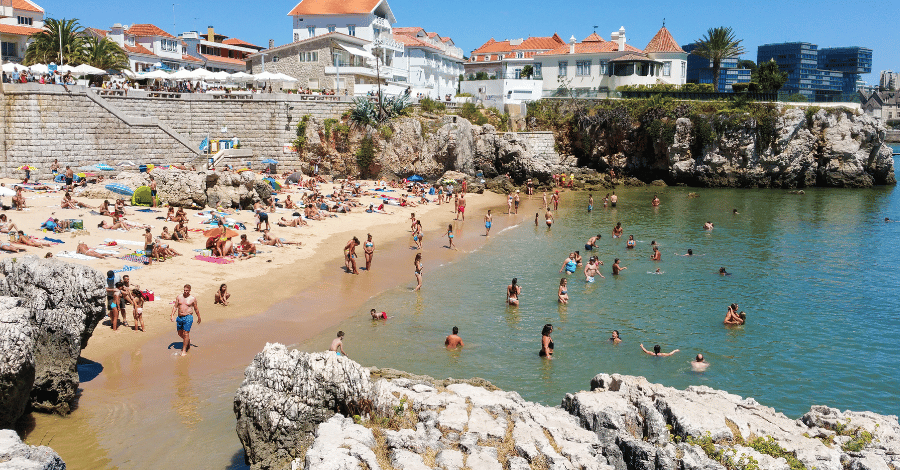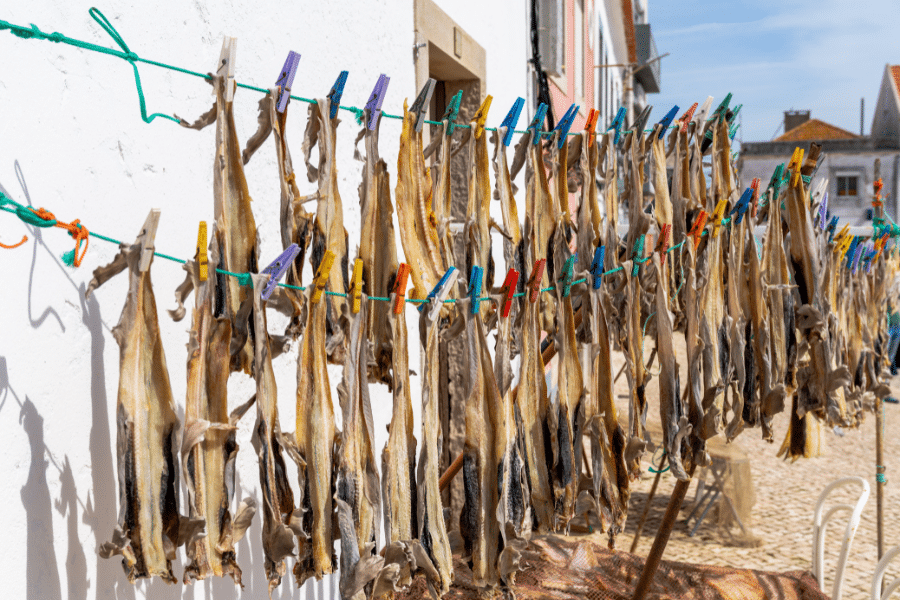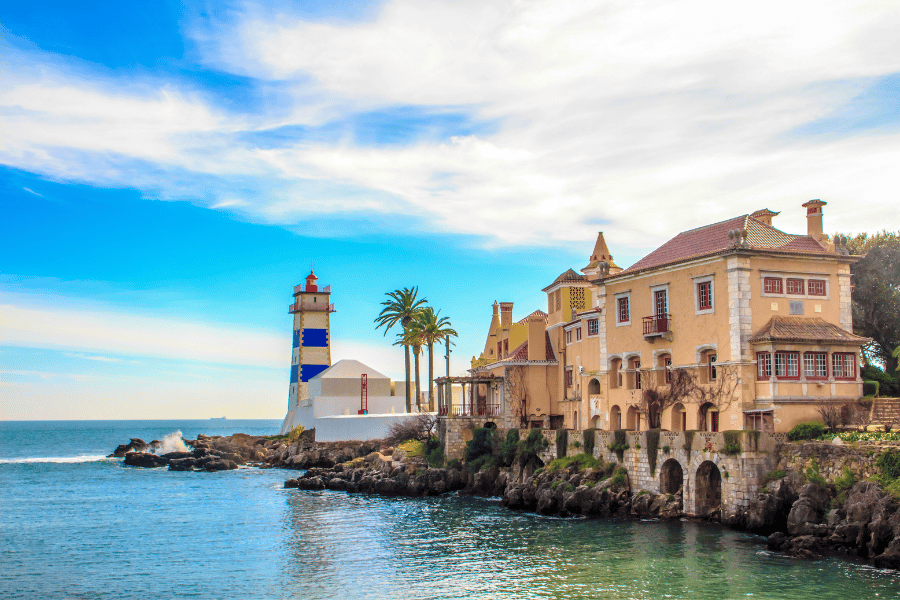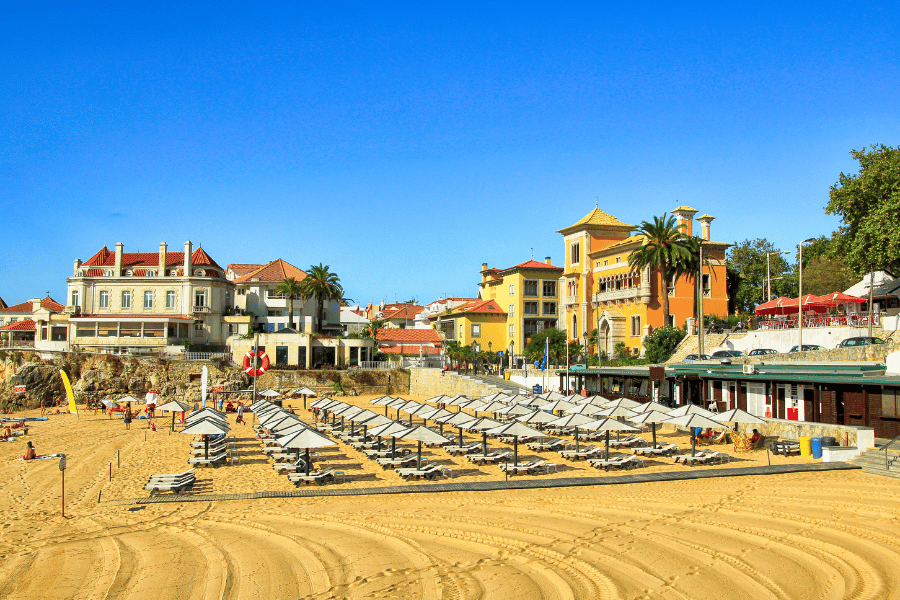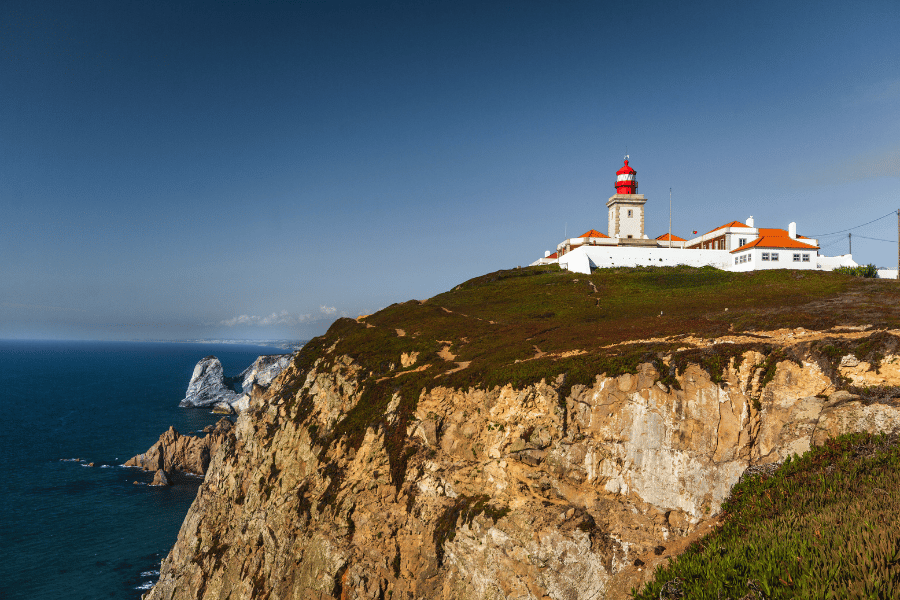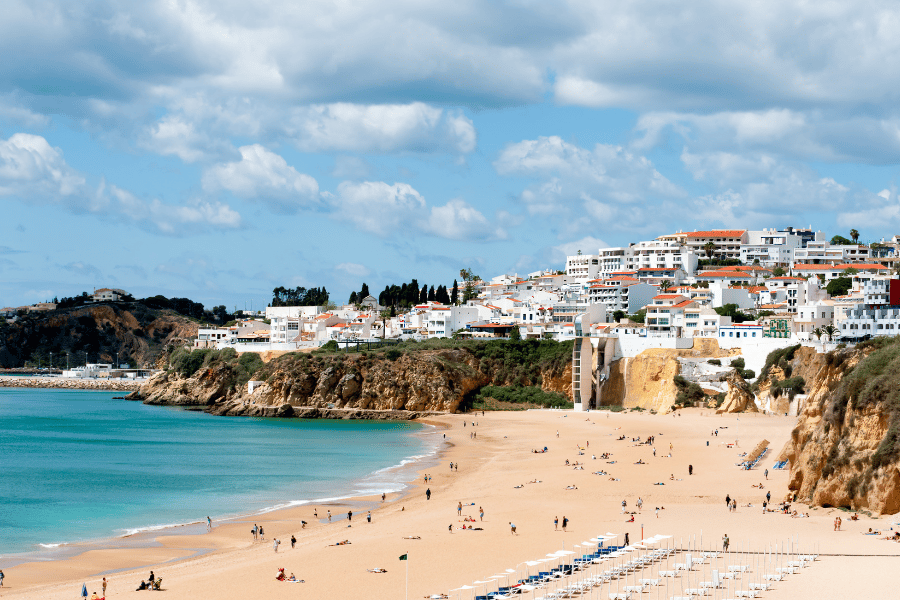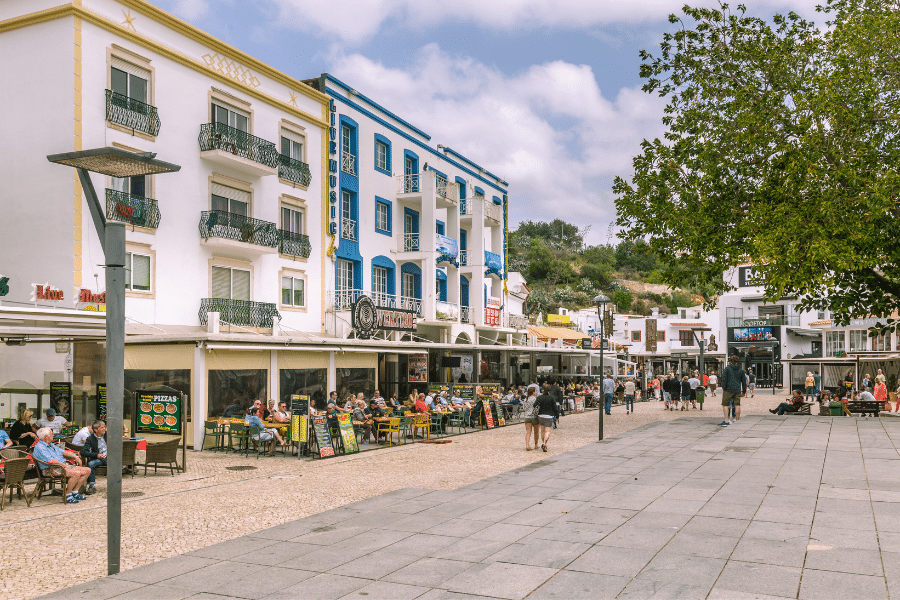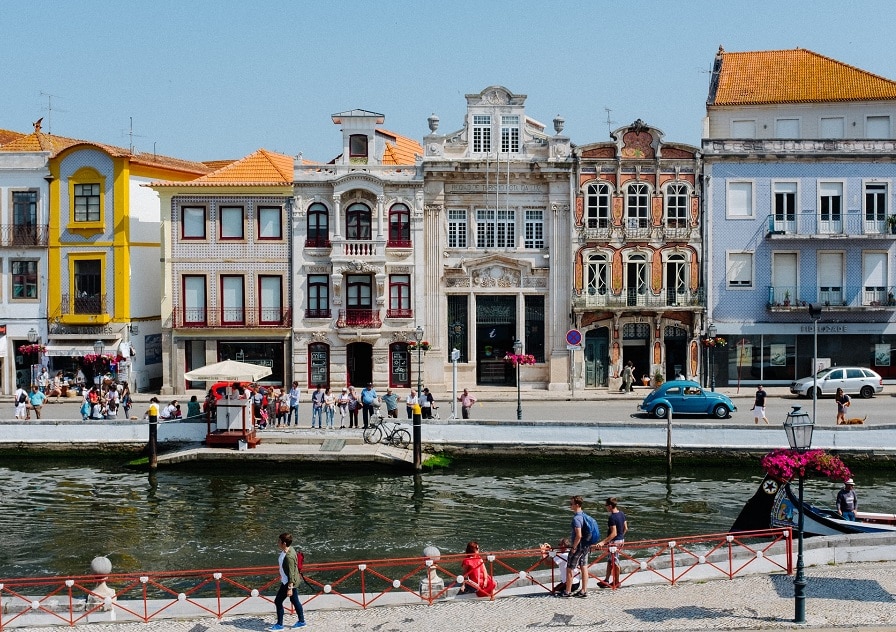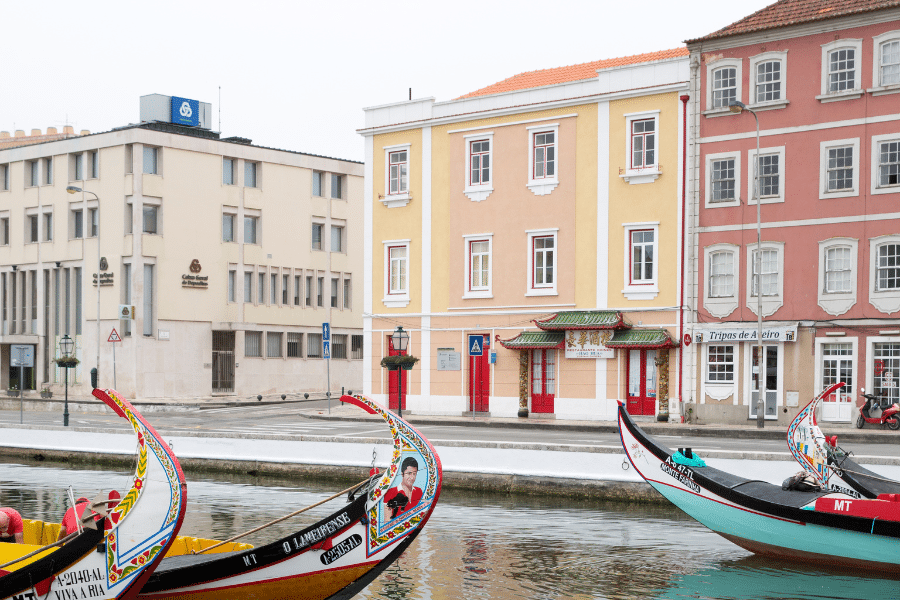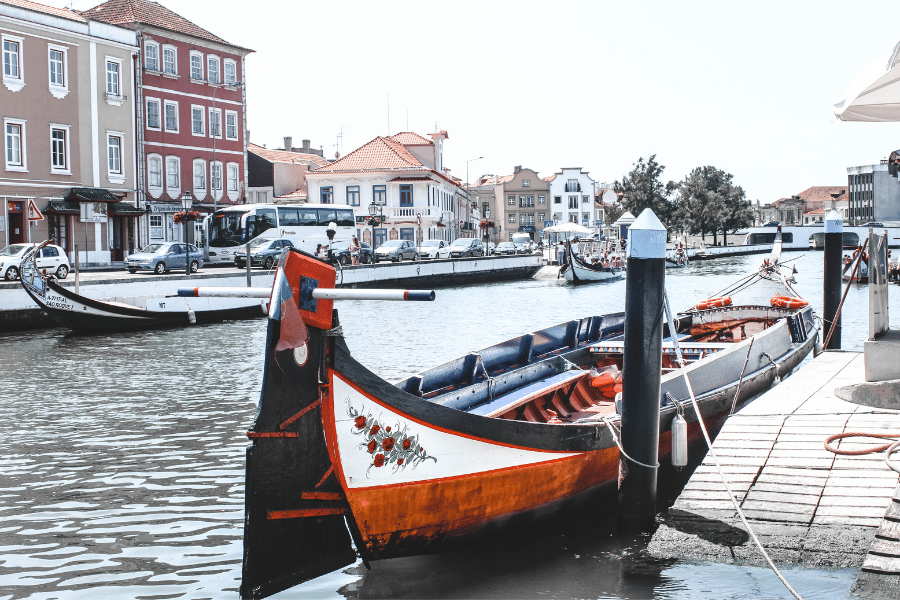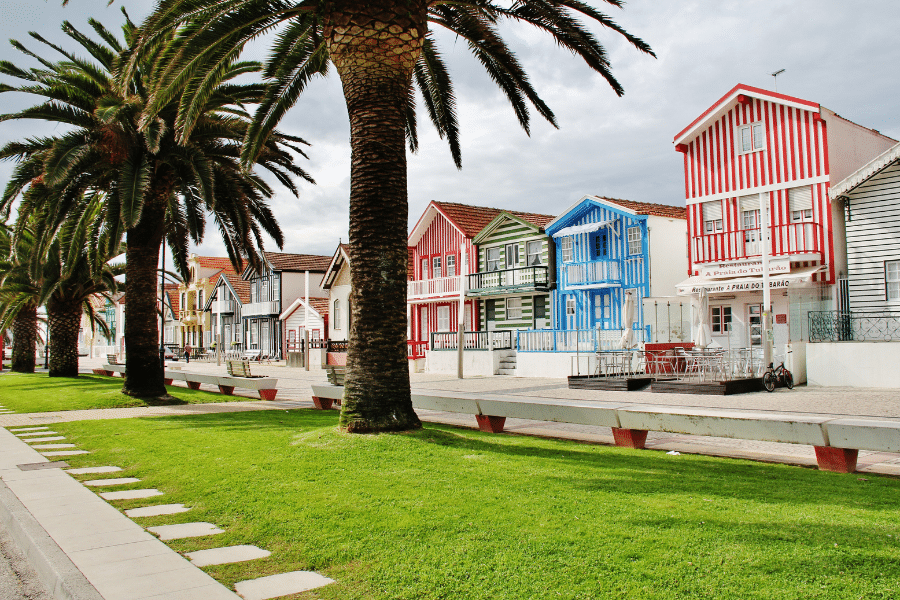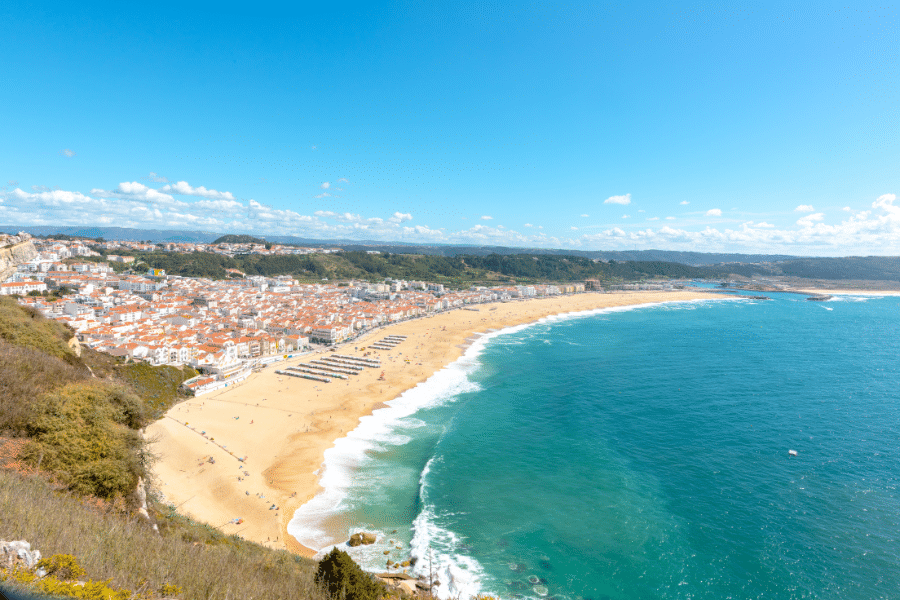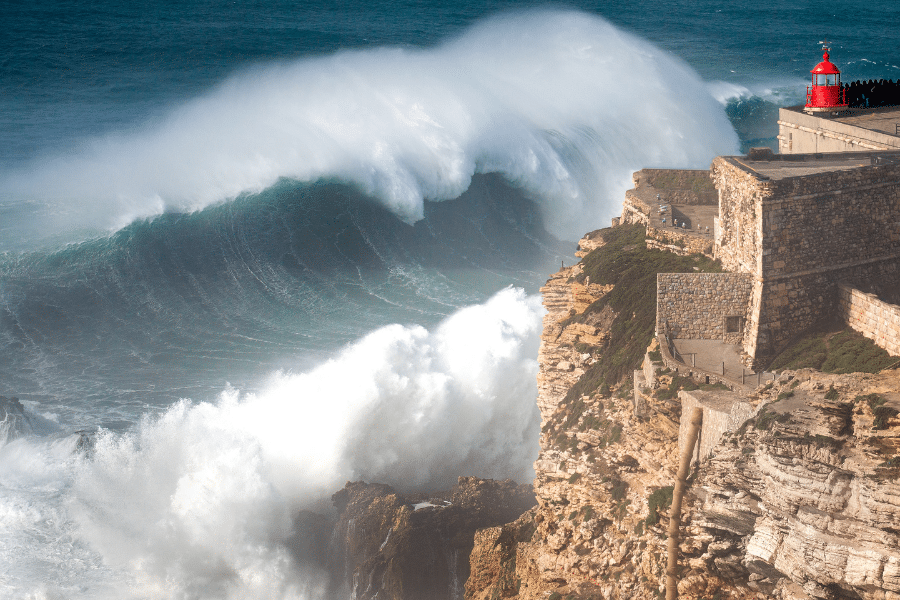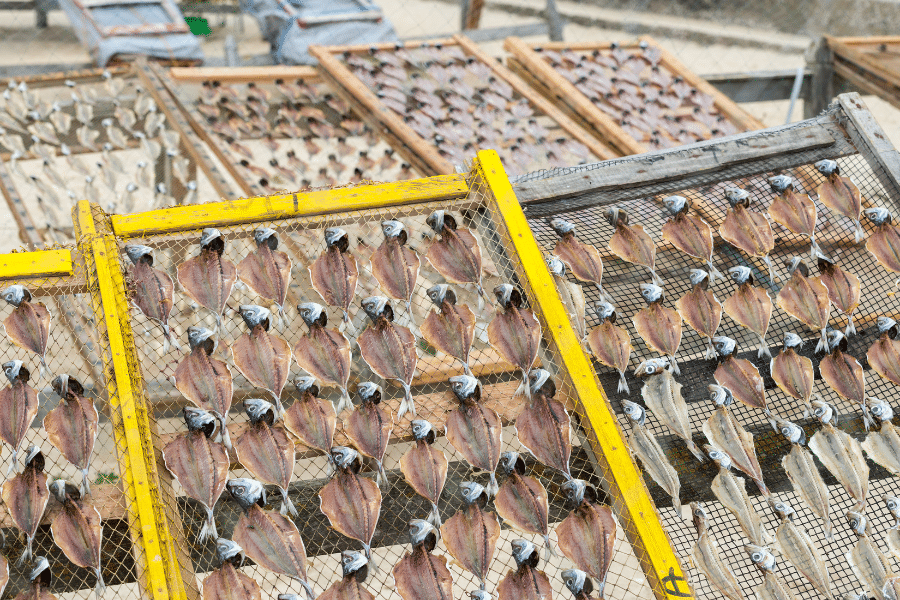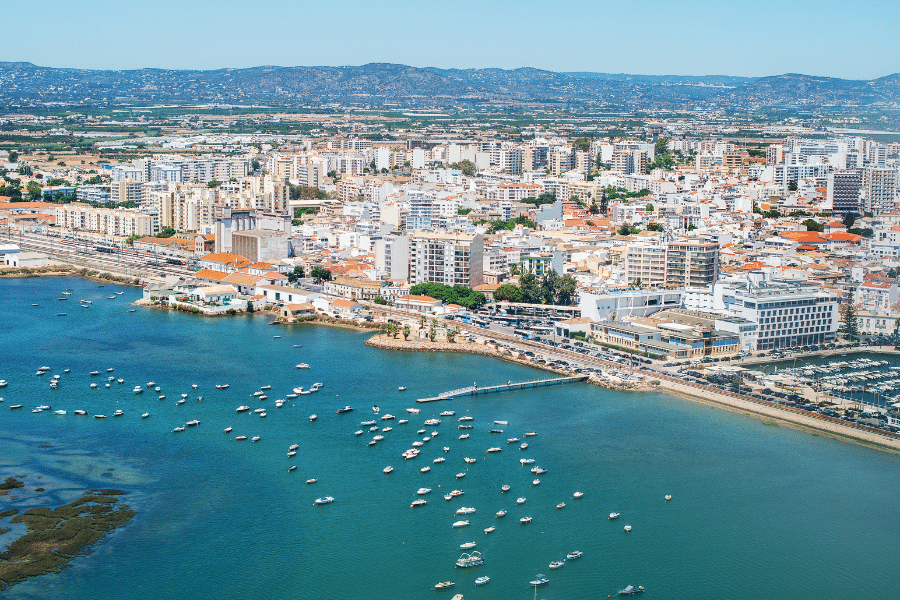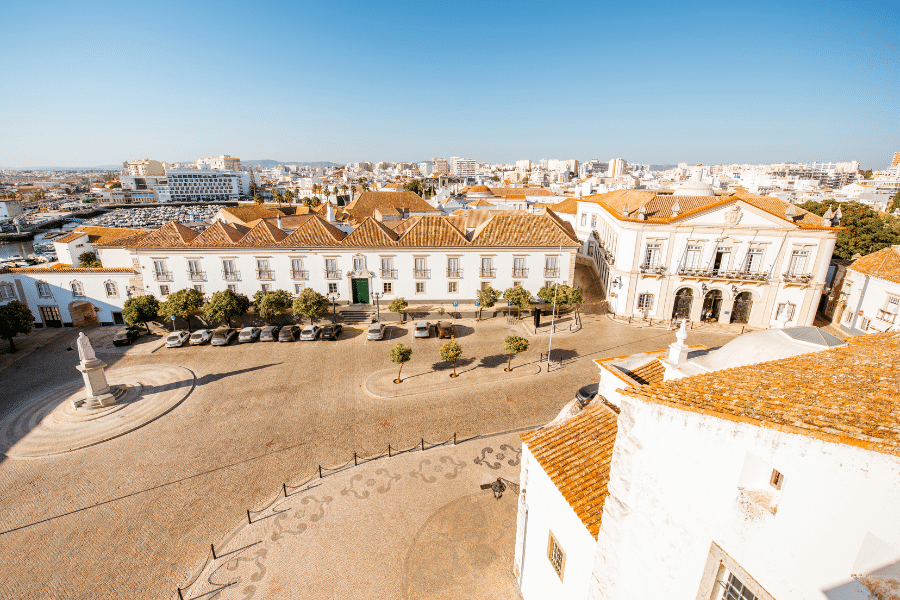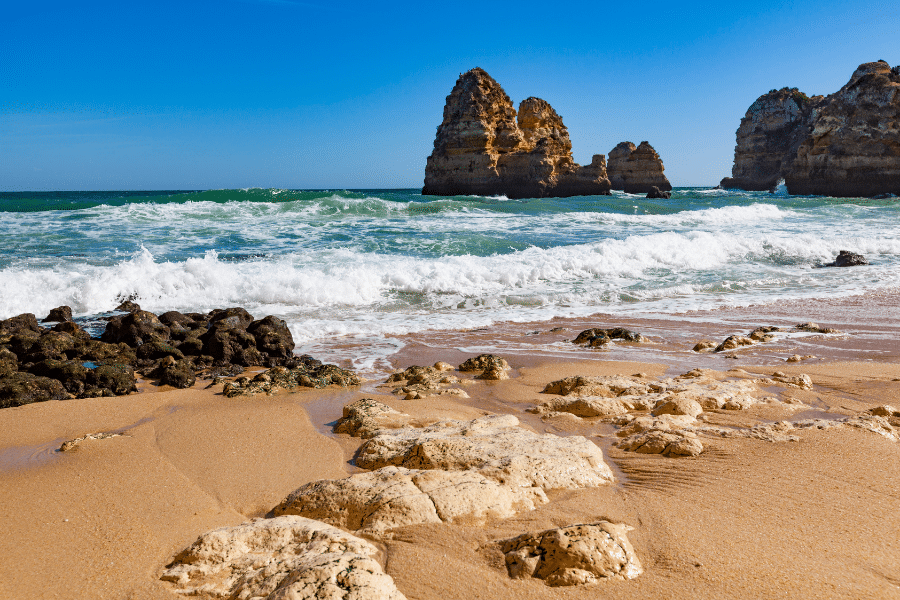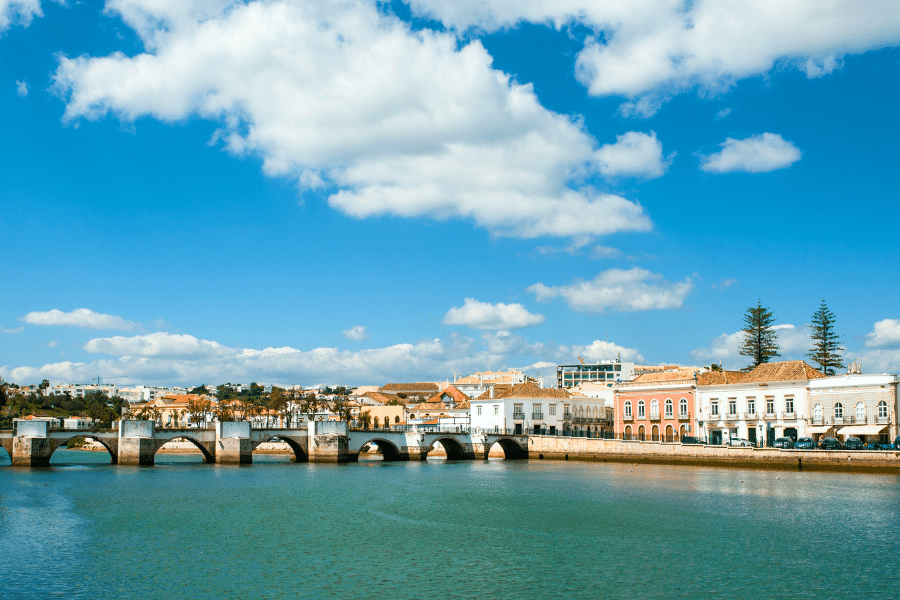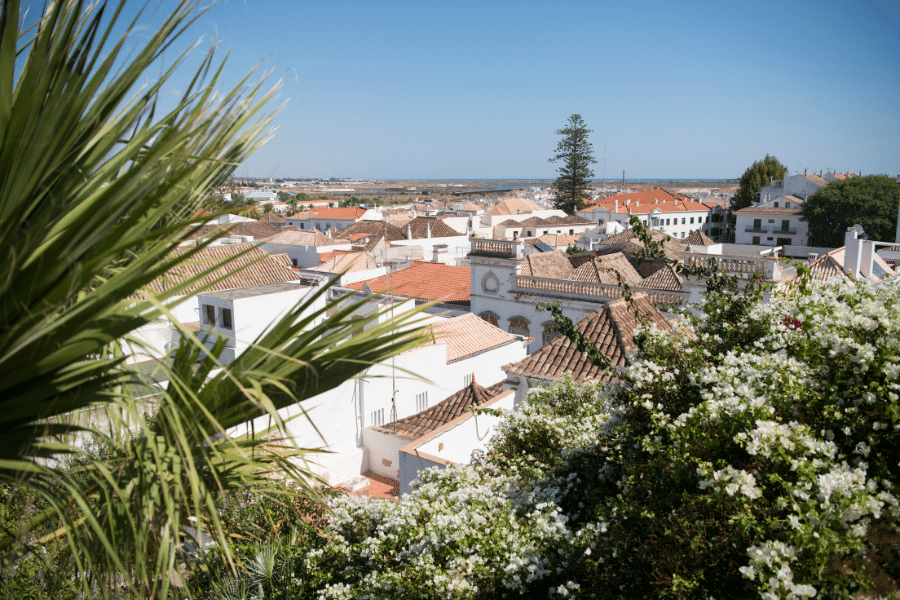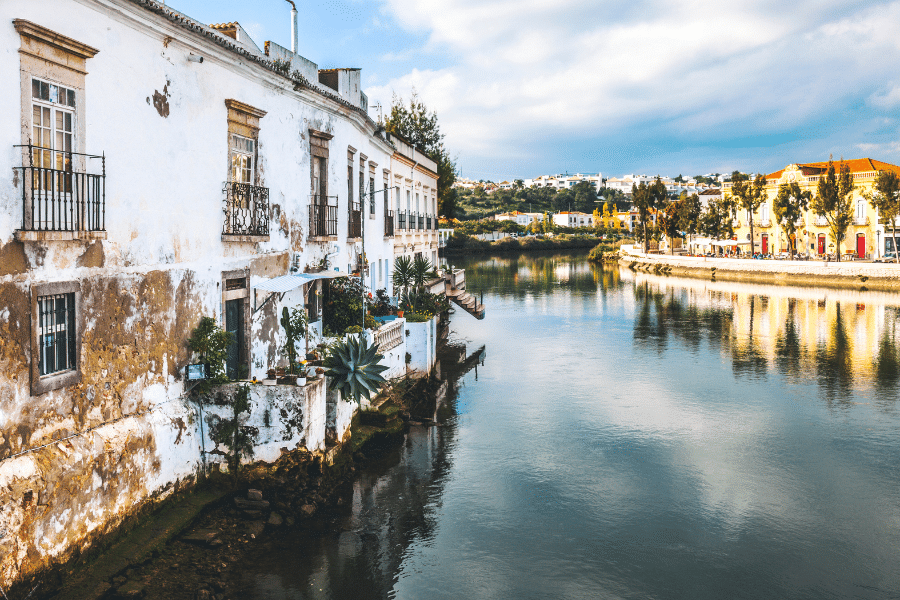The coastal and beach towns of Portugal are unlike any other place in the entire Europe, full of tradition, character and beauty that are uniquely Portuguese. Visiting the western and southern coast of Portugal is guaranteed to create memories to last a lifetime. But living or retiring in one of its gorgeous towns is the kind of lifestyle people from all over the world dream about, while many have already claimed their own place on Portugal’s increbile coastline.
But it’s hard to select the best coastal towns in Portugal when there are a number of things to consider and so many great choices. The Portuguese coastal areas, especially the Algarve, boast an attractive Mediterranean climate with mild winters and warm, sunny summers. Moreover, the extensive coastline along the Atlantic Ocean is renowned for its seafood. Coastal towns often have daily fish markets, and many restaurants serve dishes made from the catch of the day. Staples include sardines, codfish (bacalhau), clams, and octopus.
The towns along the Atlantic Coast often have a slower, more laid-back pace of life compared to urban centers. This relaxed atmosphere is a draw for many seeking a less hectic lifestyle, quiet walks on the beach, and tranquil evenings watching the sun setting on the ocean.
Active types will not be dissapointed either. Surfing, sailing, paddleboarding, and fishing are popular activities. Portugal, with spots like Nazaré and Peniche, is also recognized as a global surfing destination. Additionally, Portugal has a storied maritime heritage, from the Age of Discoveries to traditional fishing villages. Coastal towns in Portugal often have maritime museums, historic forts, and other landmarks that celebrate this legacy.
Many Portuguese coastal and beach towns have annual festivals celebrating their maritime heritage, religious events, or local traditions. Examples include the sardine festivals in the summer or the Our Lady of the Sea processions. From the rugged cliffs of the western Algarve to the sandy beaches of the Silver Coast, each coastal region offers distinct landscapes and natural beauty. Areas like the Ria Formosa in the Algarve are protected natural parks, emphasizing the importance of conservation and sustainable living.
One of the lesser talked-about benefits of living in a coastal town in Portugal, particularly in smaller ones, is that they tend to have tight-knit communities where locals form close bonds. The sense of community is strengthened by shared events, markets, and festivals. Coastal living in Portugal offers a blend of the old and new, where age-old traditions exist alongside modern amenities and lifestyles. Whether it’s the call of the ocean, the rich history, or the allure of the Mediterranean diet, the Portuguese coast has something for everyone.
Here are the 6 very best beach towns in Portugal:
1. Cascais
Why: Cascais, a gorgeous coastal town of about 200,000 residents, located just a short drive from Lisbon, is renowned for its pretty beaches, upscale lifestyle, and historic sites. It’s a favorite destination for those who want to enjoy the sun, the sea and an overall high-quality of life in Portugal, particularly popular with high-worth retirees and families.
What is Interesting in the Area: Walk along the scenic Cascais Bay, relax on the white sandy beaches, and visit the Cascais Marina. The town also has a vibrant arts and culture scene, with numerous museums, galleries, and theaters.
Things to See and Do: Explore the nearby Boca do Inferno, a natural seaside rock formation, and visit the charming village of Sintra, known for its fairytale-like palaces and lush forests. Cascais offers a coastal paradise with easy access to all the amenities of a city.
Diversity of Beaches: Cascais boasts a range of beaches from small coves to long sandy expanses. This variety ensures that there’s a beach for every preference, whether you’re looking for a bustling spot or a tranquil retreat.
Praia da Ribeira: Often referred to as Fisherman’s Beach, this small patch of sand in the heart of Cascais is emblematic of the town’s fishing heritage. It’s not uncommon to see local fishermen at work, maintaining their boats or laying out their catch to dry.
Praia do Guincho: This beach is a paradise for surfers and windsurfers. Known for its strong winds and powerful waves, it has hosted numerous international surfing competitions. The surrounding landscape, characterized by rolling sand dunes and rocky outcrops, adds to its allure.
Natural Beauty: The coastline near Cascais isn’t just about sandy beaches; it’s dotted with dramatic cliffs, caves, and unique rock formations. The “Boca do Inferno” or “Mouth of Hell” is one such natural wonder. It’s a chasm located on the seashore close to Cascais and is famous for the powerful waves that crash into its caves, creating an impressive display, particularly during stormy weather.
Estoril Coast: Cascais is part of the famous Estoril Coast, known for its upscale amenities, including the Estoril Casino, one of the largest in Europe. The promenade that stretches between Cascais and Estoril is perfect for leisurely walks, offering spectacular sea views.
Cultural Significance: The beaches and coastline of Cascais have long inspired artists, writers, and musicians. This cultural significance is reflected in the town’s lively arts scene, with numerous galleries, festivals, and events that celebrate its maritime heritage.
Accessibility: Unlike some other popular coastal destinations, many of Cascais’s beaches are easily accessible by train from Lisbon. This makes it a favored spot for day-trippers from the capital.
2. Albufeira
Why: Albufeira, located in the Algarve region, is famous for its stunning beaches, lively nightlife, and a relaxing atmosphere. It’s a favorite spot for both tourists and expats.
What is Interesting in the Area: Albufeira’s golden beaches, such as Praia da Falésia and Praia dos Pescadores, are perfect for sunbathing and water sports. The Old Town with its cobbled streets, vibrant bars, and seafood restaurants is a must-visit.
Things to See and Do: Take a boat tour to explore the Algarve’s dramatic coastline, visit the Zoomarine theme park, and enjoy a round of golf at one of the many nearby golf courses. Albufeira provides a mix of relaxation and entertainment.
Ancient Origins: Albufeira wasn’t always the tourist destination it is today. The area’s history dates back to the Bronze Age, and it has been occupied by various civilizations, including the Romans and Moors. Its name, “Albufeira,” is derived from the Arabic term “Al-Buħaira,” meaning “sea lagoon.”
Historic Earthquake: The catastrophic 1755 Lisbon earthquake had a significant impact on Albufeira. Much of the town was destroyed, including the ancient castle walls. However, some historical structures still stand today, bearing witness to the event.
Fisherman’s Roots: Before it became a bustling tourist destination, Albufeira was a quaint fishing village. Evidence of its maritime heritage can still be observed in the old town, where narrow, winding streets and old fishermen’s cottages can be found.
Tunnels to the Beach: Albufeira’s old town has several tunnels carved through the cliffs, which provide direct access to the beaches. These tunnels are remnants of the town’s history, linking the town to its fishing roots.
Museu Municipal de Arqueologia: Albufeira is home to an archaeological museum that might appear small but houses a rich collection. The museum displays artifacts from the Neolithic era, the Roman occupation, and the Moorish era, offering a deep dive into the region’s long and varied history.
Natural Caves and Grottoes: Apart from the popular beaches, Albufeira’s coastline boasts an intricate network of caves and grottoes, best explored by boat. These natural formations add an adventurous flair to the scenic beauty of the Algarve coast.
Endemic Plant Species: The region around Albufeira hosts some plant species which are unique to the Algarve. If you’re a nature enthusiast, exploring the hinterlands can offer a glimpse of flora not found anywhere else.
3. Aveiro
Why: Aveiro, often referred to as “the Venice of Portugal,” is a charming coastal town known for its canals, colorful boats, and Art Nouveau architecture. It’s a lovely escape from the hustle and bustle of larger cities.
What is Interesting in the Area: Take a boat ride through the canals, known as “Moliceiros,” and explore the historic city center with its unique architecture. And be sure to enjoy the traditional Ovos Moles, a local sweet treat.
Things to See and Do: Visit the Aveiro Lagoon, where you can spot various bird species, and take a short drive to the nearby Barra Beach with its iconic lighthouse.
Ria de Aveiro: One of Aveiro’s most defining features is its expansive lagoon, Ria de Aveiro. This lagoon is not only scenic but is also a rich ecosystem supporting a variety of marine life.
Moliceiros: These are traditional, brightly painted boats originally used for harvesting seaweed. Today, they are mainly used for taking tourists on scenic rides through Aveiro’s canals.
Art Nouveau: Aveiro boasts a notable collection of Art Nouveau buildings, which give the city a distinct architectural charm. The Museu Arte Nova is dedicated to this style and showcases its influence in the city.
Ovos Moles: Aveiro is famous for this sweet delicacy made from egg yolks and sugar, wrapped in a thin communion wafer in various shapes. It’s a must-try for anyone visiting the city.
Praia da Barra: Located close to Aveiro, this beach is known for its iconic striped lighthouse, the tallest in Portugal. It’s a popular spot for both locals and tourists.
Praia da Costa Nova: Famous for its colorful striped wooden houses known as “palheiros”, this beach is a delightful place to relax. The houses were traditionally used by fishermen to store their equipment.
Jardim do Rossio: This central garden in Aveiro is a favorite spot for both locals and tourists. It’s a great place to relax, with several cafes and eateries nearby.
Mercado do Peixe: A traditional fish market by day, this area becomes a bustling hub of nightlife after hours, with several bars and restaurants offering fresh seafood dishes.
4. Nazaré
Why: Nazaré is a coastal town with a unique blend of old-world charm and world-renowned big wave surfing. It offers a glimpse into Portuguese fishing traditions and a fantastic experience for surf enthusiasts.
What is Interesting in the Area: Explore the village with its cobblestone streets and colorful boats, visit the Nazaré Sanctuary, and witness the Praia do Norte, famous for hosting some of the largest waves in the world.
Things to See and Do: Enjoy fresh seafood at local restaurants, take a ride on the funicular to the Sitio promontory for breathtaking views, and watch surfers tackle monstrous waves during the winter months. Nazaré provides a mix of culture and adrenaline-pumping experiences.
Praia da Nazaré: The town’s main beach, it’s perfect for sunbathing, swimming, and people-watching. This beach has a long promenade lined with cafes and restaurants.
Praia do Norte: World-famous for its massive waves, it’s a hotspot for big wave surfing. Even if you’re not a surfer, visiting the lighthouse’s viewpoint offers breathtaking views of the waves and surf action.
Sítio: It’s the neighborhood perched on the cliffs above the main part of Nazaré. The view from here is stunning, and you can either take a funicular or drive up.
Surfing & Bodyboarding: Besides big wave surfing, Nazaré offers spots suitable for all levels. There are numerous surf schools in the area for beginners.
Stand Up Paddleboarding (SUP): On calmer days, SUP is a popular activity in the waters of Nazaré.
Fishing: Nazaré has a rich fishing heritage. You can embark on deep-sea fishing excursions or simply enjoy the spectacle of local fishermen at work and the incredible displays of dried fish.
Dolphin Watching: Several tour operators offer boat tours that take you into the Atlantic in search of dolphins.
Suberco Viewpoint: Located in Sítio, this viewpoint offers panoramic views of Nazaré, its beaches, and the vast Atlantic.
5. Faro
Why: Faro, the capital of the Algarve region, is a coastal town with a rich history, well-preserved architecture, and a relaxed atmosphere. It serves as the gateway to the Algarve’s stunning coastline, while also being a great destination in itself.
What is Interesting in the Area: Explore the Old Town with its cobbled streets, enjoy fresh seafood in local restaurants, and visit the Faro Cathedral for incredible views of the city and the sea. The Ria Formosa Natural Park, just outside the city, is an excellent choice for nature enthusiasts.
Things to See and Do: Take a boat tour through the Ria Formosa, discover the picturesque Ilha Deserta, and enjoy the serene Praia de Faro. Faro offers a unique blend of history and natural beauty.
Historic Old Town (Cidade Velha): Enclosed by ancient defensive walls, Faro’s Old Town is a maze of cobblestone streets, squares, and historic buildings. The architecture here is a blend of Moorish and Portuguese styles, reflecting the town’s rich history.
Arco da Vila: One of the most recognizable landmarks in Faro, this neoclassical gateway arch was built on the site of a medieval castle entrance. Intriguingly, it incorporates a horseshoe arch from the Moorish era, making it a symbol of the city’s layered history.
Cathedral of Faro (Sé de Faro): This cathedral dates back to the 13th century and features a mix of Gothic, Renaissance, and Baroque architectural styles. It has been rebuilt and renovated multiple times due to pirate attacks and earthquakes.
Bone Chapel (Capela dos Ossos): Located at the back of the Church of Nossa Senhora do Carmo, this small chapel’s interior is lined with the bones and skulls of over 1,000 monks. It serves as a memento mori, reminding visitors of the transient nature of life.
Ria Formosa Natural Park: Faro is the main gateway to this series of barrier islands and lagoons. Recognized as a natural park, Ria Formosa is a haven for migratory birds and unique marine life. The park is also home to traditional salt pans and tidal mills.
Ilha Deserta (Deserted Island): As the name suggests, this is one of the least developed islands in the Ria Formosa chain. Accessible by boat from Faro, it offers pristine beaches and a sense of solitude. The island has only one restaurant and is perfect for those seeking tranquility.
Ilha da Culatra: Another island in the Ria Formosa chain, Culatra is inhabited and free from cars. There are two main settlements, Culatra and Farol, with the latter known for its iconic lighthouse. The beaches here are extensive and relatively uncrowded.
Praia de Faro: Located on the mainland but adjacent to the Ria Formosa, this beach is easily accessible from the city and offers a long stretch of golden sands. It’s popular with both locals and visitors.
6. Tavira
Why: Tavira is a historic coastal town located in the eastern Algarve region. It is known for its well-preserved architecture, tranquil atmosphere, and golden beaches. Unlike some other towns in the Algarve, Tavira has largely escaped the rush of modern tourism development. Its skyline is punctuated by historic churches rather than high-rise hotels, preserving the town’s authentic feel.
What is Interesting in the Area: Explore the Old Town with its winding streets, visit the Tavira Castle, and discover the stunning bridges that cross the Gilão River. Tavira is also famous for its Roman and Moorish influences.
Things to See and Do: Relax on the pristine beaches of Tavira Island, take a boat trip along the Ria Formosa Natural Park, and sample fresh seafood in local restaurants. This town provides a serene and culturally rich coastal experience.
Roman Bridge (Ponte Romana): While commonly referred to as the “Roman Bridge,” it is believed that its current structure mainly dates back to the 17th century. However, its foundations could very well be Roman. This pedestrian-only bridge spans the Gilão River and is a central landmark in Tavira.
Tavira Island (Ilha de Tavira): A lesser-known gem, this island is part of the Ria Formosa natural park. Accessible by ferry, it boasts long stretches of pristine beaches. Unlike other popular beach destinations in the Algarve, Tavira Island offers a more secluded experience.
Salt Pans: Tavira has a history of salt production, and you can still find operational salt pans in the vicinity. The sea salt harvested here is known for its high quality.
Camera Obscura: Housed in an old water tower, Tavira’s Camera Obscura offers a unique way to view the town. Using a periscope mechanism, it projects a live 360-degree view of Tavira onto the walls of a darkened room, providing a panoramic perspective.
Phoenician Origins: While Tavira’s history as a Roman and then Moorish settlement is well-known, there’s evidence suggesting that the town’s origins might trace back to the Phoenicians, an ancient maritime culture from the Eastern Mediterranean.
Multiple Churches: Despite its modest size, Tavira is home to over 20 churches, each with its own architectural and historical significance. This has earned Tavira the moniker of the “City of Churches.”
Ghosts of the Past: The ruins of Tavira Castle offer panoramic views of the town. While not as grand or intact as other Portuguese castles, wandering through its gardens and remnants gives a palpable sense of Tavira’s layered history.
Praia da Ilha de Tavira (Tavira Island Beach): This is arguably the most popular beach associated with Tavira. Accessible by ferry from the town, the beach offers a long stretch of golden sands and clear waters. It’s spacious enough that even during peak tourist season, you can find a relatively secluded spot. There are also several cafes and restaurants on the island to cater to visitors.
Praia do Barril: Located on the Ilha de Tavira but closer to the village of Santa Luzia, this beach is unique due to its “Anchor Graveyard” (Cemitério das Âncoras). This memorial, with rows of rusting anchors, pays tribute to the region’s once-thriving tuna fishing industry. The beach is accessible by a small train or a footpath.
Praia da Terra Estreita: A more secluded option on the Ilha de Tavira, this beach is accessed by ferry from Santa Luzia. It’s less crowded than some of the other beaches and offers a serene environment for relaxation.
Praia de Cabanas: Located on the Ilha de Cabanas, this beach is reached by taking a short boat ride from the village of Cabanas de Tavira. It’s a tranquil beach with clear waters, ideal for swimming and sunbathing.
Praia da Fábrica: Near the village of Cacela Velha, this beach is often regarded as one of the Algarve’s most beautiful. During low tide, it’s possible to walk to the beach, but during high tide, a boat ride is required. The natural beauty and scenic views from this beach are truly breathtaking.
Praia do Homem Nu: Translating to “Naked Man Beach,” this is the Algarve’s unofficial naturist beach. It’s located on the Ilha de Tavira and is more secluded, providing privacy for its visitors.

